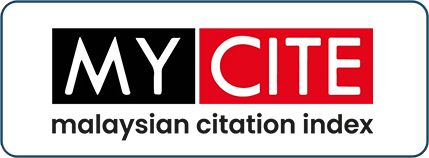Penggunaan Media Dalam Talian Menurut Perspektif Maqāṣid Al-Shari‘Ah
The Use Of Online Media In The Perspective Of Maqāṣid Al-Shari‘ah
DOI:
https://doi.org/10.33102/jfatwa.vol27no3.451Keywords:
Maqāṣid al-Shari‘ah; al-darūriyat al-khams; Media Sosial; TeknologiAbstract
Penggunaan media sosial yang meluas hari ini oleh kebanyakan individu pada pelbagai umur dan pekerjaan membawa banyak kebaikan yang tidak dapat dinafikan lagi. Walaubagaimanpun, jika disalahguna media sosial akan membawa kesan negatif terhadap sesebuah masyarakat. Kajian ini bertujuan menilai kebaikan dan keburukan media sosial dalam rangka Maqāṣid al-Shari‘ah. Hasil kajian mendapati lima prinsip penting (al-darūriyat al-khams) dalam Maqāṣid al-Shari‘ah, iaitu perlindungan terhadap agama (al-Din), nyawa (al-Nafs), akal (al-'Aql), keturunan (al-Nasl) dan harta (al-Māl) mampu menjadi panduan dalam penggunaan media sosial dan mengawal mudharat yang boleh dibawa oleh media sosial. Kajian ini mencadangkan supaya Maqāṣid al-Shari‘ah dijadikan panduan dalam membuat sesuatu dasar pengunaan teknologi.
Downloads
References
Ahmed, A., E. Awad, S. Farouq, R. Ayesh, M. Mohammed, N. Alneqabi, M. Abdulahamiad & Ismail, J. (2017). Online blackmail; Crimes feed on the boom of social networking. https://www.albay an.ae/across-the-uae/news-and-reports/2017-07-24-1.3009066. Accessed 1 April 2022.
Al Habsi, A., Butler, M., Percy, A., & Sezer, S. (2021). Blackmail on social media: what do we know and what remains unknown? Security Journal, 34(3), 525–540. https://doi.org/10.1057/s41284-020-00246-2
Al Qahtani, E., M. Shehab & Aljohani, A. (2018). The effectiveness of fear appeals in increasing smartphone locking behaviour among Saudi Arabians. Proceedings of the Fourteenth USENIX Conference on Usable Privacy and Security. P 31–46.
Al-Ghazali, M. M. (2019). Shifa' al-Ghalil fi Bayan al-Shabah wa-al--Mukhil wa-Masalik al-Ta'lil. Damascus: Dar Ninawa.
Ali, I., Asif, M., Hamid, I., Sarwar, M. U., Khan, F. A., & Ghadi, Y. (2022). A word embedding technique for sentiment analysis of social media to understand the relationship between Islamophobic incidents and media portrayal of Muslim communities. PeerJ Computer Science, 8. https://doi.org/10.7717/PEERJ-CS.838
Al-Khadimi, N. M. (2001). ‘Ilm al-Maqasid al-Shariah. Riyadh: Maktabah al-‘Abikah.
Al-Raysuni, A. (2006). Imamal-Shatibi's Theory of the Higher Objectives and Intents of Islamic Law. USA: International Institute of Islamic Thought, Herndon.
Al-Shatibī, I. (2004). Al-Muwafaqat fĀ Usūl al-Sharīʿah (ʿAbdullah Al-Darraz, Ed.), Beirut, Dar al-Kutub al-ʿIlmiyah
Al-zaman, S. (2022). Heliyon Social mediatization of religion : Islamic videos on YouTube. Heliyon, 8(February), e09083. https://doi.org/10.1016/j.heliyon.2022.e09083
al-Zuhaylī, M. (2003). Maqāṣid al-Sharīʿah: Asās li-Huqūq al-Insān. Doha: Ministry of Awqāf and Islamic Affairs of Qatar.
Ancillai, C., Terho, H., Cardinali, S., & Pascucci, F. (2019). Advancing social media-driven sales research: Establishing conceptual foundations for B-to-B social selling. Industrial Marketing Management, 82(December 2018), 293–308. https://doi.org/10.1016/j.indmarman.2019.01.002
As-Sa'di, A. R. N. (2018). Tafseer as-Sa'di. English Edition 1. Publish by International Islamic Publishing House.
Balhara, Y. P. S., Singh, S., & Yadav, Z. (2022). Media reporting on deaths due to suicide attributed to gaming in digital news: A case of misrepresentation and missed opportunities. Asian Journal of Psychiatry, 68 (November 2021), 102955. https://doi.org/10.1016/j.ajp.2021.102955
Bin-Tahir, S. Z., Amri, M., Nagauleng, A. M., Diniaty, A. & Hajar, I. (2019). The social media use for digital natives: Parenting model of Muslim cleric families. International Journal of Scientific and Technology Research, 8(11), 2871 – 2874.
Burholt, V., Windle, G., Gott, M. & Morgan, D. J. (2020). Technology mediated communication in familial relationships: Moderated-mediation models of isolation and loneliness. The Gerontologist, 60(7), 1202–1212. https://doi.org/10.1093/geront/gnaa040
Burns, J., Johnstone, K., Chavanduka, T., Jamison, C., Pena, V., Stephenson, R. & Darbes, L. (2020). Evaluation of the Sexual Health Behaviors of Black Male Adolescents and Young Adults Through Social Media Platforms: Web-Based Survey Study. JMIR Public Health Surveill. 6 (3).
Cao, Y., Gong, F., & Zeng, T. (2020). Antecedents and Consequences of Using Social Media for Personal Finance. Journal of Financial Counseling and Planning, 31(1), 162–176. https://doi.org/10.1891/JFCP-18-00049
Castaño-Pulgarín, S. A., Suárez-Betancur, N., Vega, L. M. T., & López, H. M. H. (2021). Internet, social media and online hate speech. Systematic review. Aggression and Violent Behavior, 58(July 2020). https://doi.org/10.1016/j.avb.2021.101608
Chuang, S. H. (2020). Co-creating social media agility to build strong customer-firm relationships. Industrial Marketing Management, 84(June), 202–211. https://doi.org/10.1016/j.indmarman.2019.06.012
Columb, D., Griffiths M.D. & O'Gara, C. (2019). Online gaming and gaming disorder: More than just a trivial pursuit. Irish Journal of Psychological Medicine, 39(1). 0 1-7. https://doi.org/10.1017/ipm.2019.31
Dwisanty, R. & Shiam, S.S. (2019). Opportunities for Social Media Students in Online Business. IOP Conference Series: Materials Science and Engineering, 662(3).
EUROPOL. (2017). Online sexual coercion and extortion as a form of crime affecting children: law enforcement perspective. https://www.europol.europa.eu/publications-documents/online-sexua l-coercion-and-extortion-form-of-crime-affecting-children-law-enforcement-perspective. Accessed 1 April 2022.
Every-Palmer, S., Cunningham, R., Jenkins, M. & Bell, E. (2020). The Christchurch mosque shooting, the media, and subsequent gun control reform in New Zealand: a descriptive analysis. Psychiatry, Psychology and Law, 28(2), 274–285 DOI 10.1080/13218719.2020.1770635.
Evolvi, G. (2019). #Islamexit: inter-group antagonism on Twitter. Information Communication and Society, 22(3), 386–401. https://doi.org/10.1080/1369118X.2017.1388427
Frey, E., Bonfiglioli, C., Hons, B. A., Brunner, M., & Frawley, J. (2021). Parents' Use of Social Media as a Health Information Source for Their Children: A Scoping Review. Academic Pediatrics, 000. https://doi.org/10.1016/j.acap.2021.12.006
Froio, C. (2018). Race, religion, or culture? Framing Islam between Racism and neo-racism in the online network of the French far-right. Perspectives on Politics, 16(3), 696–709. https://doi.org/10.1017/S1537592718001573
Gabarron, E. & Wynn, R. (2016). Use of social media for sexual health promotion: a scoping review. Glob Health Action, 19;9 (1):32193. DOI: 10.3402/gha.v9.32193
Gaber, M., Khaled, H. N. & Nassar, M. A.A. (2019). Effect of pornography on married couples. Menoufia Medical Journal, 32(3) , July-Sept. 2019, p. 1025.
González-Bueso, V., Santamaría, J., Fernández, D., Merino, L., Montero, E. & Ribas, J. (2018). Association between internet gaming disorder or pathological video-game use and comorbid psychopathology: a comprehensive review. International Journal of Environmental Research And Public Health. 15, 668.
Hafez F. (2020). Unwanted identities: the 'Religion Line' and global islamophobia. Development 63(1):9–19 DOI 10.1057/s41301-020-00241-5.
Halim, W. (2018). Young Islamic preachers on Facebook: Pesantren As'adiyah and its engagement with social media. Indonesia and the Malay World, 46(134), 44–60. https://doi.org/10.1080/13639811.2018.1416796
Hew, W. W. (2018). THE ART OF DAKWAH: social media, visual persuasion and the Islamist propagation of Felix Siauw. Indonesia and the Malay World, 46(134), 61–79. https://doi.org/10.1080/13639811.2018.1416757
Hing, N., Russell, A.M.T., Black, A., Rockloff, M., Browne, M., Rawat, V., Greer, N. & Stevens, M. (2022). Gambling prevalence and gambling problems amongst land-based-only, online-only and mixed-mode gamblers in Australia: A national study. Computers in Human Behavior. DOI 10.1016/j.chb.2022.107269
Horsti, K. (2017). Digital Islamophobia: The Swedish woman as a figure of pure and dangerous whiteness. New Media & Society, 19(9), 1440–1457. https://doi.org/ 10.1177/1461444816642169
Ibn ‘Ashur, M. A. T. (1998). Maqasid al-Shari’ah al-Islamiyyah, ed., al-Misawi, Muhammad al-Tahir, al-Basa’ir, Kuala Lumpur.
Jeanis, M.N. (2020). Missing Persons and Runaway Youth: The Role of Social Media as an Alert System and Crime Control Tool. . [Advanced Sciences and Technologies for Security Applications] Science Informed Policing ||. , 10.1007/978-3-030-41287-6, –. DOI: 10.1007/978-3-030-41287-6
Komara, R., Widyastuti, A., Layyinaturrobaniyah. (2019). Financial Literacy and Demography. Characteristics Among Indonesian Millennials (2019) Proceedings of the 2019 International Conference on Organizational Innovation. DOI https://doi.org/10.2991/icoi-19.2019.15
Lander, D. (2018). The financial counselling industry: Past, present, and policy recommendations. Journal of Financial Counseling and Planning, 29(1), 163–174. https://doi.org/10.1891/1052-3073.29.1.163
Lin, Y. (2022). Social media for collaborative planning: A typology of support functions and challenges. Cities, 125 (July 2020), 103641. https://doi.org/10.1016/j.cities.2022.103641
Luscombe, B. (2016). Porn and the threat to virility. The first generation of men who grew up with unlimited online porn sound the alarm. Time, 187(13), 40–47.
Luyten, H. (2022). Studies in Educational Evaluation The global rise of online chatting and its adverse effect on reading literacy. Studies in Educational Evaluation, 72(October 2021), 101101. https://doi.org/10.1016/j.stueduc.2021.101101
Mahmud, A. Al, Le, A., & Mubin, O. (2021). Use of YouTube as a Source of Information for Quitting or Cutting Down Alcohol. Frontiers in Public Health. 9(December), 1–6. https://doi.org/10.3389/fpubh.2021.787994
Mennig, M., Tennie, S., & Barke, A. (2022). Self-Perceived Problematic Use of Online Pornography Is Linked to Clinically Relevant Levels of Psychological Distress and Psychopathological Symptoms. Archives of Sexual Behavior, 51(2), 1313–1321. https://doi.org/10.1007/s10508-021-02101-w
Miro-Llinares, ´ F., Moneva, A., & Esteve, M. (2018). Hate is in the air! But where? Introducing an algorithm to detect hate speech in digital microenvironments. Crime Science, 7(1), 1–12. https://doi.org/10.1186/s40163-018-0089-1
Mohd, N., Azlan, E. & Yunos, Z. (2019). Terrorism indoctrination via social media: A Malaysian case study. Proceedings of the 6th European Conference on Social Media, ECSM.
Monaghan, A. (2017). The impact of Self-Generated Images in online pornography. Middlesex University: Doctoral Dissertation.
Moon, R. Y., Mathews, A., Oden, R., & Carlin, R. (2019). Mothers' Perceptions of the Internet and Social Media as Sources of Parenting and Health Information: Qualitative Study. Journal of Medical Internet Research. 21, 1–9. https://doi.org/10.2196/14289
Nadarzynski, T., Burton, J., Henderson, K., Zimmerman, D., Hill, O. & Graham, C. (2019). Targeted advertisement of chlamydia screening on social media: A mixed-methods analysis. Digit Health. DOI: 10.1177/2055207619827193]
Nakagomi, A., Shiba, K., Kondo, K., Kawachi, I. (2020). Can online communication prevent depression among older people? A longitudinal analysis Journal of Applied Gerontology, 2020 Dec 24;733464820982147. https://doi.org/10.1177/0733464820982147
Nisa, E. F. (2018). Social media and the birth of an Islamic social movement: ODOJ (One Day One Juz) in contemporary Indonesia. Indonesia and the Malay World, 46(134), 24–43. https://doi.org/10.1080/13639811.2017.1416758
Okabe, Y., Takahashi, F., & Ito, D. (2021). Problematic Pornography Use in Japan: A Preliminary Study Among University Students. Archives of Sexual Behavior. Vol 51 (2). P 1221-1235.https://doi.org/10.3389/fpsyg.2021.638354
Othman, S. S., Alsuwaidi, A., Aseel, R., Alotaibi, R., Bablgoom, R., alsulami, G., Alharbi, R., & Ghamri, R. (2022). Association between social media use and the acceptance of COVID-19 vaccination among the general population in Saudi Arabia – a cross-sectional study. BMC Public Health, 22(1), 1–11. https://doi.org/10.1186/s12889-022-12757-1
Papaefthimiou, E.,Galanis, P., Lavranos, G. & Lamnisos, D. (2018). Use of social media for sexual health promotion. Nursing Care and Research. Issue 50. P 55-71.
Poole, E. A., Giraud, E., & de Quincey, E. (2019). Contesting# StopIslam: The dynamics of a counter-narrative against right-wing populism. Open Library of Humanities, 5 (1). doi:10.16995/olh.406.
Pretorius, K., Johnson, K.E. & Rew, L. (2019). An integrative review: understanding parental use of social media to influence infant and child health. Matern Child Health J. 2019;23:1360–1370. https://doi.org/ 10.1007/s10995-019-02781-w
Romero-Rodríguez, J. M., Kopecký, K., García-González, A., & Gómez-García, G. (2022). Sharing images or videos of minors online: Validation of the Sharenting Evaluation Scale (SES). Children and Youth Services Review, 136. https://doi.org/10.1016/j.childyouth.2022.106396
Rosidi, M. H., Mokhtar, A. W. & Abdul Majid, M. N (2021a). Penerimaan Fatwa Dalam Kalangan Masyarakat Muslim Malaysia:Satu Tinjauan Literatur: Acceptance of Fatwa Among Malaysian Muslim Society:A Literature Review. Journal of Fatwa Management and Research, 24(1), 45-62.
Rosidi, M. H., Mokhtar, A. W. Bin, & Majid, M. N. B. A. (2022a). The Role of Maqasid al-Shari’ah as a Fundamental Ethics in Social Media Use. International Journal of Academic Research in Business and Social Sciences, 12(4), 1285–1301. http://dx.doi.org/10.6007/IJARBSS/v12-i4/13044
Rosidi, M. H., Mokhtar, A. W. Bin, & Majid, M. N. B. A. (2022b). Conceptual Framework on the Adoption of Online Media for Fatwa Information among Malaysian Muslims. International Journal of Academic Research in Business and Social Sciences, 12(5), 634–647. http://dx.doi.org/10.6007/IJARBSS/v12-i5/13235
Rosidi, M. H., Mokhtar, A. W., & Abdul Majid, M. N (2021b). The Impact of Social Media on The Acceptance Of Fatwas Among Malaysian Muslims. Journal of Fatwa Management and Research, 26(1), 17-36. https://doi.org/10.33102/jfatwa.vol26no1.389
Rusli, R., & Nurdin, N. (2021). Understanding Indonesia millennia Ulama online knowledge acquisition and use in daily fatwa making habits. Education and Information Technologies. https://doi.org/10.1007/s10639-021-10779-7
Rusli, R., Hasyim, M. S., & Nurdin, N. (2020). A new Islamic knowledge production and fatwa rulings how Indonesia's young Muslim scholars interact with online sources. Journal of Indonesian Islam, 14(2), 499–518. https://doi.org/10.15642/JIIS.2020.14.2.499-518
Scandurra, C., Mezza, F., Esposito, C., Vitelli, R., & Mauro, N. (2022). Online Sexual Activities in Italian Older Adults : The Role of Gender, Sexual Orientation, and Permissiveness. Sexuality Research and Social Policy, 248–263. https://doi.org/10.1007/s13178-021-00538-1
Setyastuti, Y., Suminar, J.R., Hadisiwi, P. & Zubair, F. (2019). Millennial moms: Social media as the preferred source of information about parenting in Indonesia. Library Philosophy and Practice.
Shaban, S. (2020). Teenagers, Terrorism, and Technopanic: How British Newspapers Framed Female ISIS Recruits as Victims of Social Media. International Journal of Communication, 14(1), 535–555.
Shvaher, O. A., Degtyarev, S. I., & Polyakova, L. G. (2021). The effect of social media on financial literacy. International Journal of Media and Information Literacy, 6(1), 211–218. https://doi.org/10.13187/IJMIL.2021.1.211
Smith, K. T., & Smith, L. M. (2021). Analysis of Social Media Usage and Relationship to Profit Margin among Insurance Companies. Services Marketing Quarterly, 42(1–2), 108–123. https://doi.org/10.1080/15332969.2021.1948488
Solahudin, D., & Fakhruroji, M. (2020). Internet and Islamic learning practices in Indonesia: Social media, religious populism, and religious authority. Religions, 11(1), 1–12. https://doi.org/10.3390/rel11010019
Soussan, T., Trovati, M. (2022). Social Media Data Misuse. In: Barolli, L., Chen, HC., Miwa, H. (eds) Advances in Intelligent Networking and Collaborative Systems. INCoS 2021. Lecture Notes in Networks and Systems, vol 312. Springer, Cham. https://doi.org/10.1007/978-3-030-84910-8_19.
Tourani, N. (2022). Thriving in a shifting landscape: Role of social media in support of business strategy. Asia Pacific Management Review. https://doi.org/10.1016/j.apmrv.2021.11.001
Van Rooij, A.J., Kuss, D.J., Griffiths, M.D., Shorter, G.W., Schoenmakers, T.M. & Van De Mheen, D. (2014). The (co-) occurrence of problematic video gaming, substance use, and psychosocial problems in adolescents. Journal of Behavioral Addictions 3, 157–165.
Vaughan, E., & Flack, M. (2021). Depression Symptoms, Problem Gambling and the Role of Escape and Excitement Gambling Outcome Expectancies. Journal of Gambling Studies, 0123456789. https://doi.org/10.1007/s10899-021-10032-3
Vidgen, B., & Yasseri, T. (2020). Detecting weak and strong Islamophobic hate speech on social media. Journal of Information Technology and Politics, 17(1), 66–78. https://doi.org/10.1080/19331681.2019.1702607
Walker, L.O., Mackert, M. S., Ahn, J., et al. (2017). E-Health and new moms: contextual factors associated with sources of health information. Public Health Nurs. 2017;34:561–568. https://doi.org/10.1111/phn.12347
Whyte, S. A. (2022). Islamic Religious Authority in Cyberspace: A Qualitative Study of Muslim Religious Actors in Australia. Religions, 13(1), 1–16. https://doi.org/10.3390/rel13010069
Yakovenko, I., & Hodgins, D. C. (2018). A scoping review of co-morbidity in individuals with disordered gambling. International Gambling Studies, 18(1), 143–172
Young, S.D., Cumberland, W.G., Lee, S., Jaganath, D., Szekeres, G & Coates, T. (2013). Social networking technologies as an emerging tool for HIV prevention: a cluster randomized trial. Ann Intern Med. 159(5):318-324. DOI: 10.7326/0003-4819-159-5-201309030-00005
Yu, K., Wu, S., & Chi, I. (2021). Internet use and loneliness of older adults over time: The mediating effect of social contact. The Journals of Gerontology: Series B, 76(3), 541–550. https://doi.org/10. 1093/geronb/gbaa004
Yu, Y., Yang, X., Wang, S., Wang, H., Chang, R., Tsamlag, L., Zhang, S., Xu, C., Yu, X., Cai, Y. & Lau, J.T.F. (2020). Serial multiple mediation of the association between internet gaming disorder and suicidal ideation by insomnia and depression in adolescents in Shanghai, China. BMC Psychiatry 20, 460. https://doi.org/10.1186/ s12888-020-02870-z.
Zhao, X. & Basnyat, I. (2017). Online Social Support for "Danqin Mama": A Case Study of Parenting Discussion Forum for Unwed Single Mothers in China. Computers in Human Behavior. S0747563217306209–. doi:10.1016/j.chb.2017.10.045
Zulkifli, C. N., Afiqah, N., Latif, A., Karina, N., & Nor, M. (2021). Uploading Videos on Social Media: A Study of Malaysian Underachievers in Improving Social Confidence and Making Income. Asian Journal of Entrepreneurship. 2(2), 9–27.
Downloads
Published
Issue
Section
License
Copyright (c) 2022 Mohd Harifadilah Rosidi, Ahmad Wifaq Mokhtar, Mohd Nasir Abdul Majid

This work is licensed under a Creative Commons Attribution 4.0 International License.
The copyright of this article will be vested to author(s) and granted the journal right of first publication with the work simultaneously licensed under the Creative Commons Attribution 4.0 International (CC BY 4.0) license, unless otherwise stated.















